Ever stood in the kitchen appliance aisle, staring at a $300 blender and thinking, “Do I really need to spend that much to make a decent smoothie?” Trust me, I’ve been there. After my expensive blender died just after the warranty expired, I embarked on a budget-friendly blending journey that changed everything I thought I knew about affordable kitchen gadgets.
Here’s the truth: You don’t need to break the bank for a reliable blender in 2025. The market is now flooded with impressive options under $50 that can handle daily smoothies, soups, and sauces without complaint. Today, I’m sharing my discoveries to help you find that perfect balance between price and performance.
Whether you’re a college student furnishing your first apartment, a budget-conscious home cook, or simply someone who doesn’t see the point in overspending on kitchen tools, this guide to the best affordable blenders of 2025 is for you. Let’s dive into a world where quality blending doesn’t require emptying your wallet.
Table of Contents
What to Look for in a Budget Blender
Before we jump into specific recommendations, let’s talk about what features actually matter when shopping for a blender under $50.
Power and Performance
When it comes to affordable blenders, power is a key indicator of what the machine can handle. Look for:
- Wattage: Most budget blenders range from 175W to 700W. For basic smoothies with soft ingredients, 250W is sufficient, but if you want to crush ice or blend frozen fruits, aim for at least 500W.
- Blade design: Stainless steel blades are standard and preferable for durability.
- Speed settings: Multiple speeds give you better control, though even basic one-speed blenders can be effective for simple tasks.
I learned this lesson the hard way when my first budget blender couldn’t handle frozen berries. The motor would whine painfully, and I’d end up with chunky smoothies full of fruity icebergs. Not exactly the refreshing breakfast I had in mind!
Materials and Durability
The jar material significantly impacts both performance and longevity:
- Glass jars: Heavier but more durable and won’t absorb odors or stains
- Plastic jars: Lighter and less likely to break if dropped, but may scratch over time
- BPA-free materials: Essential for food safety, especially when blending hot liquids
Size and Capacity
Consider both your kitchen space and typical serving sizes:
- Personal blenders: Usually 8-24oz, perfect for individual servings
- Standard countertop models: Typically 40-48oz, good for families or batch preparation
- Immersion blenders: Take up minimal storage space but require a separate container
Best Affordable Blenders Under $50 for 2025
Now let’s get to the good stuff—the actual affordable blenders that deliver impressive results without draining your bank account.
Best Overall: Hamilton Beach Power Elite Blender

Price: ~$40
This 700W workhorse has consistently topped my list of budget recommendations. The Power Elite combines power, durability, and versatility in a way few other sub-$50 blenders manage.
Why I love it:
- The 40oz glass jar is dishwasher safe and more scratch-resistant than plastic alternatives
- 12 blending functions handle everything from smoothies to salsas
- Wave-action system continuously pulls mixture down into the blades
- Surprisingly quiet operation compared to other budget models
The Power Elite particularly excels at smoothies with softer frozen fruits. While it can handle ice, I’ve found it works best when you don’t overload it—a common limitation in this price range.
Best for Smoothies: BLACK+DECKER PowerCrush Blender
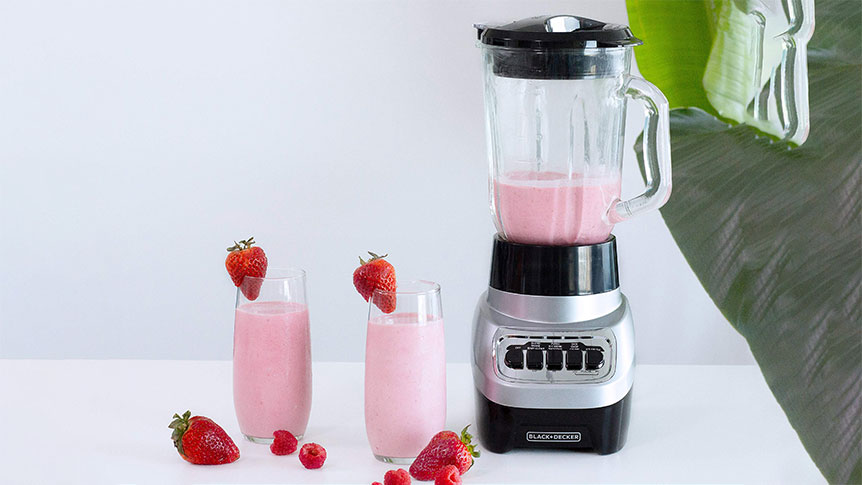
Price: ~$45
If smoothies are your primary focus, the PowerCrush offers exceptional performance for frozen ingredients.
Standout features:
- 700W motor handles frozen fruits and ice with minimal struggle
- 4-tip QuadPro blade system creates a powerful vortex for smooth results
- Multiple speed settings plus pulse function for precise control
- Durable plastic jar that’s lightweight and easy to handle
During my testing, the PowerCrush consistently produced smoother textures with frozen bananas and berries than most competitors in this price range. The jar design really does create a better blending vortex, pulling ingredients down into the blades instead of letting them get stuck on the sides.
Best Compact Option: Magic Bullet MBR-1101

Price: ~$49
When counter space is at a premium, the Magic Bullet delivers impressive versatility in a tiny footprint.
Why it stands out:
- Compact design fits in small kitchens or dorm rooms
- Includes multiple cups and lids for blending and storage in one
- 250W motor is sufficient for most soft ingredients and protein shakes
- Incredibly simple operation—just press down to blend
I keep my Magic Bullet accessible for daily smoothies because it’s so quick to use and clean. The included to-go lids mean I can blend and run without dirtying extra containers. However, be aware that it struggles with larger ice cubes and very hard ingredients—this is definitely a light-duty blender.
Best Immersion Blender: Mueller Immersion Hand Blender
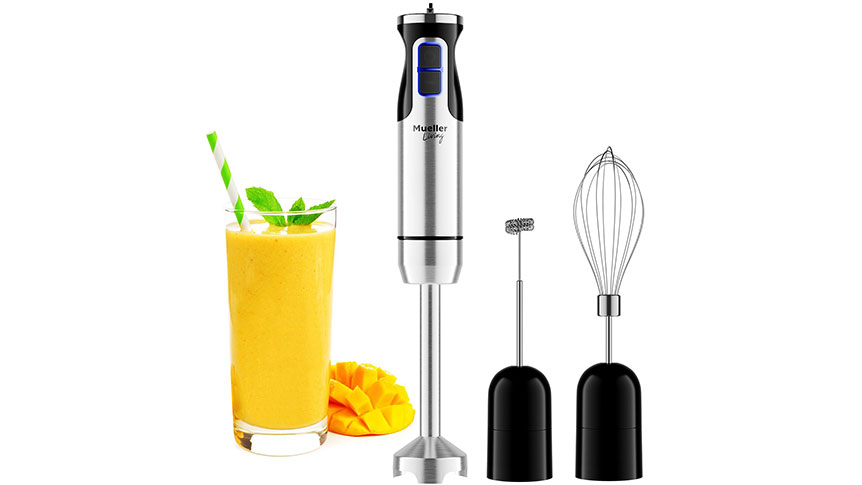
Price: ~$35
Immersion blenders offer unique versatility that countertop models can’t match, and the Mueller is the standout in the budget category.
What makes it special:
- Multi-purpose design with attachments for different tasks
- Detachable stainless steel shaft for easy cleaning
- Comfortable ergonomic grip reduces hand fatigue
- Blends directly in pots, cups, or bowls—fewer dishes to wash!
I use my immersion blender at least weekly for soups, sauces, and even quick smoothies. The ability to blend hot liquids right in the cooking pot is incredibly convenient and safer than transferring to a traditional affordable blender. At this price point, the Mueller offers surprising power and durability.
Best for Families: Oster 6832 Blender
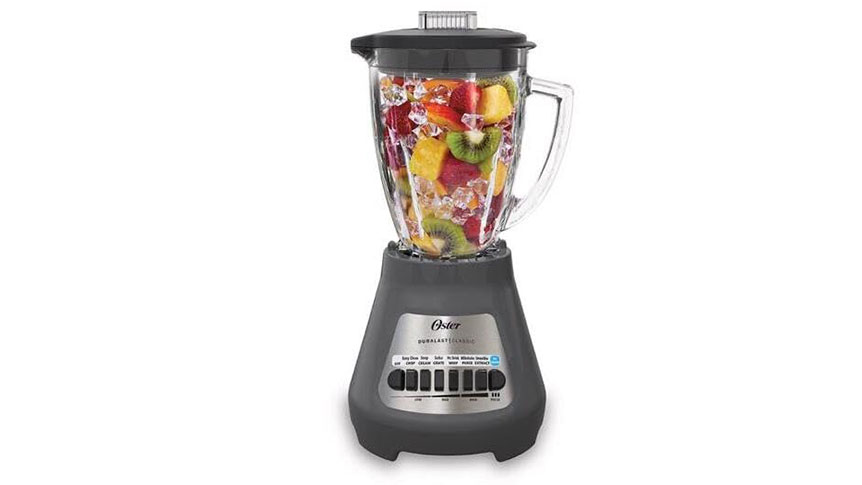
Price: ~$48
For households needing larger capacity without sacrificing performance, the Oster 6832 delivers.
Key benefits:
- 700W motor with all-metal drive for durability
- 48oz BPA-free jar accommodates family-sized batches
- 10-speed settings plus pulse for precise blending control
- Legendary Oster reliability with better warranty support than most budget brands
The Oster’s larger capacity makes it perfect for family smoothies or meal prep, while the multiple speed settings offer flexibility for different recipes. In my experience, Oster’s build quality tends to be a step above other budget options, potentially offering better longevity.
Best Portable Option: Dash Chef Series Portable Blender

Price: ~$40-$45
For blending on the go, the Dash portable blender offers battery-powered convenience.
Notable features:
- USB rechargeable battery lasts for multiple blending cycles
- Compact design fits easily in bags or backpacks
- Single-serving size perfect for personal smoothies
- Self-cleaning function—add water and soap and run for quick cleanup
I’ve taken this little powerhouse camping and to the office. While it can’t match the power of plug-in models, it handles soft fruits, protein powder, and even yogurt with ease. Just remember its limitations—no ice crushing here!
Best Value: Ganiza Blender for Smoothies
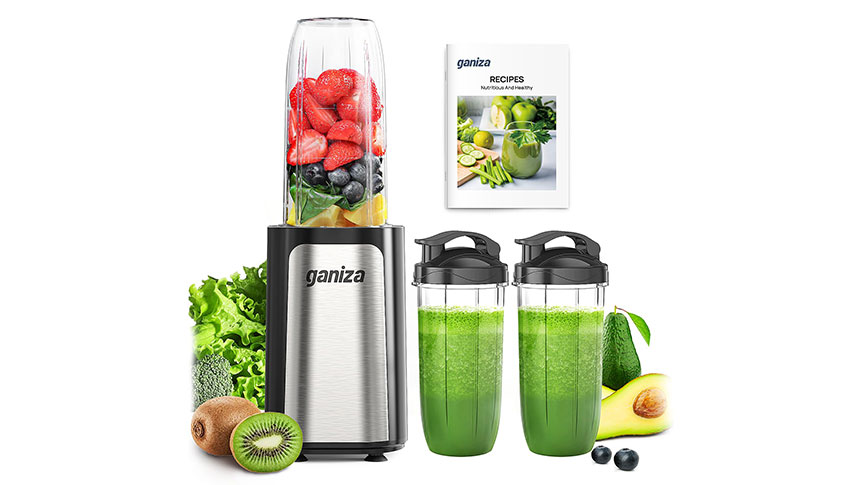
Price: ~$30
When every dollar counts, the Ganiza blender delivers basic blending functionality at the lowest possible price point.
Why it’s worth considering:
- 900W motor handles basic smoothie ingredients well
- BPA-free jar with convenient travel lid
- Extremely simple one-button operation
- Small footprint perfect for limited counter space
At this rock-bottom price, you’ll need to manage expectations. The Ganiza works best with softer ingredients and smaller quantities. However, for basic morning smoothies with banana, yogurt, and berries, it gets the job done with minimal fuss.
Comparing the Top Contenders
To help you make the best choice based on your specific needs, I’ve created this comparison table of our top recommendations:
| Blender Model | Best For | Power | Capacity | Key Feature | Price |
|---|---|---|---|---|---|
| Hamilton Beach Power Elite | Overall performance | 700W | 40oz | Glass jar | ~$40 |
| BLACK+DECKER PowerCrush | Smoothies | 700W | 48oz | QuadPro blades | ~$45 |
| Magic Bullet | Compact spaces | 250W | 18oz | Multiple cups included | ~$49 |
| Mueller Immersion | Versatility | 500W | N/A | Multiple attachments | ~$35 |
| Oster 6832 | Families | 700W | 48oz | 10-speed settings | ~$48 |
| Dash Chef Series | Portability | 175W | 15oz | Rechargeable battery | ~$45 |
| Ganiza Personal | Budget pick | 250W | 16oz | Travel lid included | ~$30 |
Read more on: Top 5 High-Speed Blenders for Perfect Smoothies.
Frequently Asked Questions About Budget Blenders
1. Are budget blenders under $50 reliable for daily use?
Yes, many budget blenders can handle daily use with proper care. The key is managing expectations—a $40 blender won’t perform like a $400 Vitamix, but it can certainly make daily smoothies and light food prep tasks without issue.
I’ve been using my Hamilton Beach Power Elite almost daily for over a year with no signs of slowing down. The secret is not overloading it and giving it brief cool-down periods between tough jobs.
2. Can a $50 blender crush ice and frozen fruits effectively?
Some can! Look for models with at least 500-700W of power like the BLACK+DECKER PowerCrush or Hamilton Beach Power Elite. Even with powerful motors, you’ll get better results if you:
• Use smaller ice cubes rather than large ones
• Add some liquid before blending frozen ingredients
• Blend in short pulses rather than continuous operation
• Don’t overfill the jar (leave about 25% empty)
3. What are the best brands for affordable blenders?
Based on my testing and research, Hamilton Beach, BLACK+DECKER, and Oster consistently offer the best quality-to-price ratio in the budget market. These established brands tend to use better materials and offer more reliable warranty service than some of the lesser-known names.
That said, newer brands like Mueller and Ganiza are making impressive inroads in the budget space, particularly for specialty formats like immersion or personal blenders.
4. How do I clean a blender under $50 without damaging it?
Proper cleaning is crucial for extending your blender’s lifespan:
1. Rinse immediately after use to prevent residue hardening
2. For basic cleaning: Fill halfway with warm water, add a drop of dish soap, and run for 10-15 seconds
3. For stuck-on food: Use a soft brush (never metal) to gently clean blades
4. Always check if parts are dishwasher safe—some plastic components may warp
5. Dry thoroughly before storing to prevent mold or mildew
I’ve found that immediate rinsing after use makes the biggest difference in maintaining both cleanliness and performance
5. Do budget blenders come with warranties?
Yes, most do—but warranty periods are typically shorter than premium models. The standard is usually 1 year, though some brands like Oster may offer 3-year limited warranties on specific components like the motor or drive system.
Always register your product after purchase and save your receipt. While dealing with warranty claims on budget products can sometimes be frustrating, having proper documentation makes the process much smoother.
6. What features should I look for in a blender under $50?
Focus on these essentials:
• Adequate power: Minimum 250W for soft ingredients, 500W+ for frozen items
• Durable jar material: Glass is best for longevity, BPA-free plastic is lighter
• Quality blades: Stainless steel is standard and most durable
• Stable base: Prevents walking across the counter during operation
• Simple controls: Fewer electronic components means fewer things to break
Nice-to-have but not essential features include pulse functions, multiple speeds, and extra attachments or containers
7. Are immersion blenders under $50 better than countertop models?
Neither is inherently “better”—they serve different purposes:
Immersion blenders excel at:
• Blending soups directly in the cooking pot
• Taking up minimal storage space
• Quick, easy cleaning for simple jobs
• Precise control in certain recipes
Countertop blenders are better for:
• Crushing ice and frozen ingredients
• Making larger batches at once
• Creating ultra-smooth textures
• Hands-free operation
Many budget-conscious cooks eventually end up with both, as they complement each other well. If forced to choose just one, I’d recommend a countertop model for smoothie lovers and an immersion blender for those who make more soups and sauces.
8. Can I make nut butter or grind coffee beans with a budget blender?
This is pushing the limits of most sub-$50 blenders. Grinding nuts into butter requires significant power and can quickly overheat budget motors. Some strategies that help:
• Work in very small batches
• Use the pulse function rather than continuous blending
• Allow the motor to cool down between batches
• Add a touch of oil to facilitate blending
For occasional small batches, you might get acceptable results, but for regular nut butter production, I’d recommend investing in a more powerful blender or a dedicated food processor
9. What is the jar capacity of most blenders under $50?
Capacity varies by type:
• Personal/portable blenders: 8-24oz
• Standard countertop blenders: 40-50oz
• Budget food processor/blender combos: Up to 72oz
For most households, a 40-48oz jar (like those found on the Hamilton Beach and BLACK+DECKER models) provides sufficient capacity for most recipes without taking up excessive space
10. Are glass jars better than plastic jars for affordable blenders?
Each has advantages:
Glass jars:
• Don’t absorb odors or stains
• More scratch-resistant
• Can handle hot ingredients better
• Generally more durable over time
Plastic jars:
• Lighter weight
• Won’t shatter if dropped
• Often less expensive
• Usually BPA-free in modern models
In the budget category, I generally prefer glass for its durability advantages, but if you have a small child who might knock the blender off the counter or if weight is a concern, plastic is a perfectly fine alternative.
How to Get the Most from Your Budget Blender
After testing dozens of affordable blenders over the years, I’ve developed some strategies to maximize performance:
1. Order Matters
The sequence in which you add ingredients significantly impacts blending efficiency:
- Liquids first (water, milk, juice)
- Soft items (yogurt, nut butter, banana)
- Leafy greens and fibrous vegetables
- Fruits and other solid ingredients
- Ice or frozen ingredients last
This layering creates a vortex that pulls ingredients down toward the blades rather than letting them spin uselessly at the top.
2. Size Matters
Cut ingredients into smaller pieces—ideally 1-inch cubes or smaller. This requires less power to process and creates less strain on the motor. I’ve found this simple step can make even a 250W blender perform like a much more powerful model.
3. Don’t Overfill
Leave about 25% of the jar empty to allow proper circulation of ingredients. Overfilling is one of the most common reasons for poor blending performance.
4. Use the Pulse Function
Short bursts of power often work better than continuous operation, especially for tough ingredients. This prevents motor overheating and gives ingredients a chance to fall back toward the blades between pulses.
5. Give It a Break
Budget motors aren’t designed for extended operation. If you’re blending something tough, give your blender short breaks every 30 seconds or so to prevent overheating.
When to Consider Spending More
While I’m a huge advocate for budget-friendly kitchen gear, there are situations where investing more makes sense:
- If you make smoothies with tons of tough ingredients (kale, carrots, nuts) daily
- If you need to blend large batches multiple times per day
- If you require absolutely silky-smooth textures for professional purposes
- If you plan to make nut butters or mill grains regularly
In these cases, stepping up to the $100-150 range can get you significantly better performance and durability. But for most home cooks making occasional to regular smoothies, soups, and sauces, the under-$50 options we’ve discussed will serve you well.
Read more on: Top 5 High-Speed Blenders for Perfect Smoothies.
Best Places to Buy Budget Blenders
While prices are similar across retailers, shopping strategies can help you get the best deal:
- Amazon: Often has the widest selection and customer reviews
- Walmart: Competitive pricing and easy returns if you have a local store
- Target: Watch for frequent kitchen appliance sales
- Manufacturer direct: Sometimes offer refurbished models with warranties at deeper discounts
I recommend checking camelcamelcamel.com or similar price tracking sites before purchasing, as blender prices can fluctuate significantly throughout the year, with the deepest discounts typically appearing during Black Friday/Cyber Monday and Amazon Prime Day events.
Conclusion: Blending on a Budget in 2025
After extensive testing and real-world use, I’m continually impressed by how far budget blenders have come. While premium models still offer advantages in power and longevity, the gap has narrowed significantly. Today’s affordable blenders deliver remarkable performance that would have been unthinkable at this price point just a few years ago.
Whether you choose the versatile Hamilton Beach Power Elite, the smoothie-focused BLACK+DECKER PowerCrush, or the ultra-compact Magic Bullet, you’re getting a capable kitchen tool that won’t break the bank. By understanding the strengths and limitations of budget blenders and following the usage tips we’ve discussed, you can enjoy perfectly blended creations without the premium price tag.

What’s your experience with budget blenders?
Have you found any hidden gems I’ve missed?
Click the links below to check current prices and bring home your perfect Blender today!
Share your creations or questions in the comments below – I’d love to hear about your affordable blending adventures!
Disclaimer: This article might contain affiliate links, meaning we may earn a commission if you click through and make a purchase at no extra cost to you.






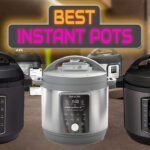

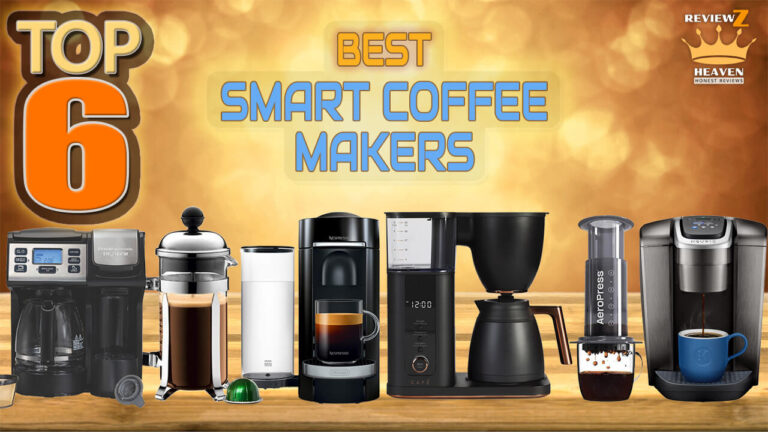

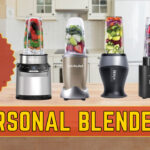

1 thought on “Affordable Blender Solutions: Best Value Picks for 2025”